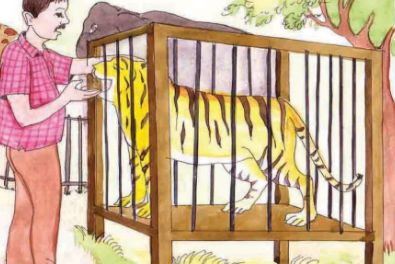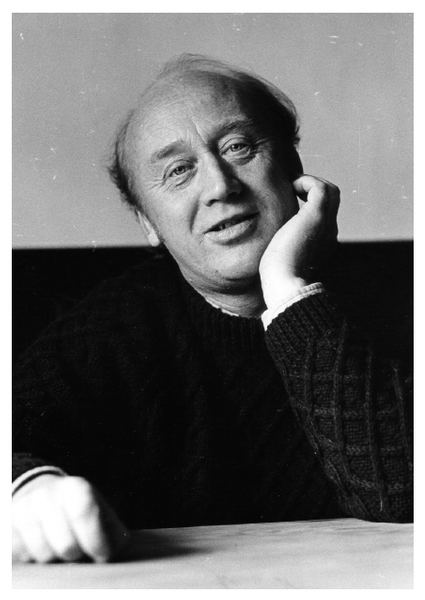- Books Name
- First Flight and Foot prints
- Publication
- ACERISE INDIA
- Course
- CBSE Class 10
- Subject
- English
Poem-3
A Tiger in the Zoo
By Leslie Norris

A Tiger in the Zoo Poem Introduction
Leslie Norris' poem describes the agony and helplessness of a caged tiger living in a zoo. The poet describes what his life would have been like if he had been a free animal. The poet attempted to explain the plight of animals caged by humans for their own amusement.
A Tiger in the Zoo Poem Summary
The poem begins with a description of a very beautiful tiger walking in his small cage. He has lovely stripes on his skin and velvety soft paws. The tiger, on the other hand, is dissatisfied and enraged at being confined in the cage. According to the poet, if the tiger had not been confined to the zoo cage, he would have been hiding behind the long grass near a body of water in order to catch its prey, the deer. He would also have terrorised the residents of the villages surrounding the forest. The reality, however, is quite the opposite.
He was imprisoned in a cage made of strong building materials, and he was helpless inside. He couldn't demonstrate his power to the visitors, so he never tried to terrorise them. The poet describes the tiger as powerless and in agony. He claims that he is alone at night as well, hearing the voices of police patrol vehicles and gazing at the stars. The tiger's personality has been completely altered by his confinement. The poet is attempting to convey the message that the animal, which is known for its fearlessness and freedom, is confined and sad as a result of human beings who seek pleasure from looking at him in the zoo cage.
A Tiger in the Zoo Lesson Explanation
He stalks in his vivid stripes
The few steps of his cage,
On pads of velvet quiet,
In his quiet rage.
- Stalks: follows
- Vivid: bright colored
- Pads: paws of tiger
- Rage: anger
The poet says here that the tiger in the zoo moves around in the cage under his brightly coloured skin. He goes on to say that the tiger can only take a few steps because the cage is small and difficult to move around in. His footsteps are unheard because he has very soft feet, like velvet, and there is no sound of the tiger's footsteps. The tiger attempts to control his rage by quietly walking around the confines of his cage. He is irritated because he is not free.
Literary devices
- Rhyme scheme: abcb (cage-rage)
- Personification: The tiger is personified because the poet refers him as ‘he’.
- Metaphor: Tiger’s paws are compared with velvet (pads of velvet)
- Enjambment: Sentence is continuing to next line without any punctuation mark.
- Imagery: poet tries to create an image about the tiger (He stalks in his vivid stripes The few steps of his cage)
- Consonance: use of ‘s’ sound (stalks, his, stripes)
- Assonance: use of vowel sound ‘I’ (in his vivid stripes)
- Oxymoron: use of adjectives opposite in meaning (quiet rage)
He should be lurking in shadow,
Sliding through long grass
Near the water hole
Where plump deer pass.
- Lurking: To be hidden as to wait for your prey
According to the poet, if this tiger was free, he would have hidden himself behind the long grass near the water bodies so that he could easily catch a deer to eat. Essentially, the poet wants to say that a tiger's natural life is to live in the jungle, where he can catch and eat his prey, whereas the tiger in the cage cannot.
Literary devices
- Rhyme: rhyme scheme is abcb (grass-pass)
- Enjambment: Line continues to next line without punctuation marks. (Sliding through….deer pass)
- Alliteration: use of sound ‘p’ at the start of two words (plump pass)
- Imagery: The poet has tries to create an image of tiger’s activities (lurking in shadow).
He should be snarling around houses
At the jungle’s edge,
Baring his white fangs, his claws,
Terrorising the village!
- Snarling: warning sounds made by animals
- Baring: uncovered
- Fangs: Sharp tooth of animals
According to the poet, if the tiger had been free, he would have snarled around the houses on the outskirts of the forest. With his razor-sharp teeth and claws, he would terrorise people. The people in the villages would be terrified as a result of this.
A Tiger in the Zoo Literary devices
- Rhyme Scheme: abcb rhyme scheme is followed (edge, village)
- Enjambment: Line continues to next line without punctuation marks (He should be snarling around houses At the jungle’s edge,)
- Onomatopoeia: using words which denote sound (snarling)
- Assonance: use of vowel sound ‘o’ and ‘I’ (should, around, houses), (Baring, his, white, his)
- Consonance: use of consonant sound ‘s’ (his, fangs, his, claws)
But he’s locked in a concrete cell,
His strength behind bars,
Stalking the length of his cage,
Ignoring visitors.
- Concrete: building made of bricks, cement, sand and water
The poet is now confronted with the reality of the tiger trapped inside the cage. He claims that the tiger is imprisoned in a strong cell made of strong building material. He goes on to say that because the tiger is imprisoned, his ferocity is also imprisoned. He just stalks around in the cage. Because his power is limited by the cage, he never tries to terrorise the visitors. As a result, he never attempts to terrorise the visitors because he cannot attack them.
Literary devices
- Rhyme Scheme: abcb rhyme scheme is followed (bars-visitors)
- Personification: The tiger is personified because the poet refers him as ‘he’.
- Assonance: use of vowel sound ‘e’ (he, locked, concrete, cell)
- Consonance: use of consonant sound ‘s’ (his, strength, bars)
- Alliteration: use of sound ‘b’ at the start of two words (behind bars)
He hears the last voice at night,
The patrolling cars,
And stares with his brilliant eyes
At the brilliant stars.
- Patrolling: to guard, to vigil
According to the poet, the tiger hears the patrolling cars in the middle of the night. Patrolling cars are police vehicles that are used to patrol at night. As a result, the tiger hears the sounds of these cars at night. He then looks up at the stars with his shining eyes. The poet wishes to convey the tiger's sadness, but because he is confined in the cage, he is powerless to intervene. As a result, he stares at the stars in the night, attempting to divert his thoughts to them.
Literary devices:
- Rhyme Scheme: abcb rhyme scheme is followed (cars-stars)
- Enjambment: Line three continues to line four without any punctuation mark. (And stares with his brilliant eyes At the brilliant stars.)
- Alliteration: use of sound ‘h’ in the starting of two words (he hears)
- Assonance: use of ‘I’ sound (with, his, brilliant)
About the Author

George Leslie Norris (1921-2006) was a Welsh poet and short storey writer who won several awards. He is regarded as one of the most important Welsh writers of the postwar period, and his literary works have won numerous awards. Finding Gold, The Loud Winder, the Phoenix Living Poets Series: Ransoms, and other works are among his most well-known.

 Online English tutor
Online English tutor
 ACERISE INDIA
ACERISE INDIA
